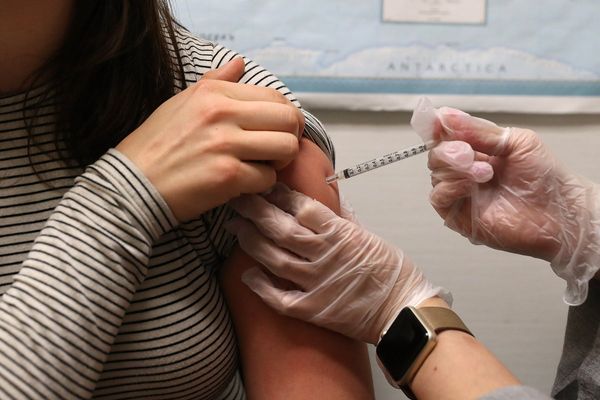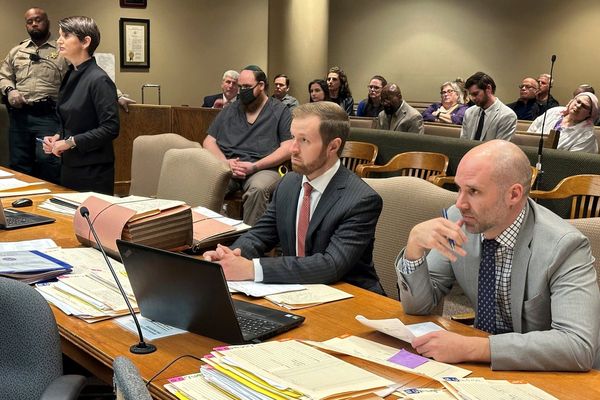
From the moment we saw Erin Patterson sobbing and wiping her eyes in her driveway in Leongatha, we started to judge her. The tone of her voice. The mournful tilting back of her head as she tried to control her emotion. The strange examining of her own fingers for tears. Was the performance real, or was she faking it? We had to decide. We had to participate.
The public’s natural hunger for participation in solving crimes has fuelled a billion-dollar podcast industry rooted in true crime. It’s elevated crime fiction to the leading genre in the book world. Overwhelmingly, true crime podcasts that deal with unsolved mysteries dominate the hit lists, and the industry celebrates crime novels with unexpected twists and unreliable narrators. That’s because the public wants to get involved. To join in. The human brain is made for solving puzzles and we hate to be fed answers. The media is riddled with advertising for opportunities to be a crime-fighting hero, from subscriptions to mail-out mystery solving games to in-person crime nights. Sydney-siders can now experience a simulated courtroom environment and be seated on a mock jury with The Jury Experience. The website boasts that “the power to deliver justice is entirely in your hands!” Just $39 a ticket.
The problem is that armchair detectives and their untrained analysis of apparent shock and grief has been historically (and, for the victims, very painfully) wrong. The plight of Joanne Lees, whose boyfriend Peter Falconio disappeared during a terrifying abduction attempt by Bradley John Murdoch in the Australian outback, is an example of the savagery of mob crime-solving. Deep-breathing and tearless, her seemingly calm walk down a corridor to front the press, and her choice of a singlet top emblazoned with the words “cheeky monkey”, turned the tide of opinions against her. Her account of crouching in bushland, evading her would-be attacker and his dog, was shredded at watercooler conversations nationwide. The whole time, Joanne was telling the truth. She was traumatised and grieving and being called a liar.
The wrongful public-opinion (and legal) convictions of Kathleen Folbigg and Lindy Chamberlain should have made us cautious about believing we can spot a killer by how they appear and behave. They didn’t. Erin’s driveway performance was viewed with suspicion. So it was time to examine the evidence.
What didn’t make sense in the mushroom saga is the apparent weight of the premeditation against Erin’s utter lack of after-crime planning. We were told by the prosecution of the coldness and calculation with which she researched, accessed and concealed the deadly mushrooms, going so far as to dehydrate and blitz them in a blender. There was, they argued, a conceited lie constructed to make the victims come to the lunch. Stringent physical measures taken to ensure only her victims, and not herself or her children, fell ill. It seemed that Erin risked her own life, and those of her kids, to make this murder plot come to fruition. She apparently wanted her in-laws dead that badly.
What then did we make of Erin’s lack of any real plan to explain why three people had suddenly died after attending the lunch? Erin’s accounting for her actions in court seemed half-hearted and ham-fisted. I lied. I panicked. I was mistaken. I don’t remember. TikTok-trained psychoanalysis of Erin’s explanations was bandied around WhatsApp group chats and office lunch rooms. She’s a narcissist. She’s a sociopath. She’s an idiot.
What makes the public’s insatiable hunger to play detective, jury member, behavioural analyst and forensic scientist so worrying is that, when we do it, we lose sight of the victims entirely. The Pattersons, the Wilkinsons and their community will never recover from Erin’s senseless act. Erin herself will likely spend her life behind bars and her children will have to somehow get through the loss of their grandparents, a great-aunt and their own mother. Right now, that family is trying to learn how to function again, having been hit with unfathomable pain. And they’ll have to do it while mushroom murder memes are shared around and influencers break down the case into 60-second soundbites over trending audio. The line between real life and fiction is blurring, helped along by AI, the fake news movement and the pursuit of likes. But it comes at the expense of truth.
I’m guilty of wandering that line myself, as a crime fiction author who keeps a close eye on court cases as a means of research. I’ve wondered many times during the mushroom trial how I’d fictionalise something like this, where I’d set it, whose perspective I would write it from. I worry that the true crime and crime fiction industry, of which I am a maker and a consumer, is making a professional crime-solver of all of us.
Candice Fox is a bestselling Australian crime novelist based in Sydney







